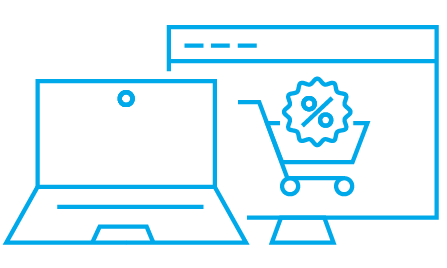- AdTech thrives during the ad downturn
- The CTV ad market will continue to diversify through 2024
- Marketers want higher-quality Connected TV data
- Truthset’s collective opens to the public to standardize high-quality data
- Is this a twilight of Google and Meta digital ad dominance?
We have compiled the most important news from the data, online advertising, and programmatic market from 8th to 27th December 2022. Check out what happened in the last two weeks on the data & programmatic market.
AdTech thrives during the ad downturn
Despite the shrinking ad spending in the US, AdTech and measurement companies saw revenue rise in Q3. Among others, Zeta Global, DoubleVerify, The Trade Desk, Hubspot, and Integral Ad Science saw their revenues increase by at least 25%, many of them owing to the partnerships with new AVOD services.
That is a sign that nowadays, marketers value measurement clarity and transparency. When the ad budgets are tight, the focus shifts from expensive branding campaigns to performance and ROAS. The accurate measurement of critical metrics such as attention, impressions, and conversions is a must. And AdTech offers just that.
The CTV ad market will continue to diversify through 2024
As the CTV ad market is dynamically expanding, its diversification is growing too. In 2020 Hulu, YouTube, and Roku covered 45.9% of the US CTV ad market. Over the last two years, the number of their significant competitors has risen with the launch of Paramount+ or Disney+ and Netflix ad-supported plans.
Today, Hulu, YouTube, and Roku make up less than 40% of the market, and this declining trend is forecasted to continue through 2024, with none of them noticing the rise in their share. Meanwhile, Netflix, Disney+, and Tubi will each hold around 3% of the market.
Regardless of the market diversity, ad-supported video streaming services are expected to notice an increase in revenue as the whole sector continues to grow. In 2026 CTV ad spending will hit $43.59 B, and AVOD viewing will reach over half of the US population – which indicates that we are entering the ad-supported amplification era in video streaming.
Marketers want higher-quality Connected TV data
The CTV ad market in the US will hit $26.92 B in 2023 and maintain double-digit growth at least until 2026. Globally, there are over 1 billion CTV devices. And, yet, some marketers refrain from investing in connected TV ads.
Lotame found that almost half (47%) of marketers worldwide would be convinced to spend more on connected TV ads if they had access to higher-quality CTV audience data. 36% of marketers are dissatisfied with the efficiency of the buying or planning process for CTV ads, and 1/3 are concerned with frequency capping and measurement.
Truthset’s collective opens to the public to standardize high-quality data
High-quality data is necessary to conduct a successful digital marketing campaign. Although there are companies that provide tools to verify the quality of the data (Truthset, Nielsen), the ad industry has yet to prepare universal data quality standards.
Truthset’s initiative tackles this issue with a data collective partnering with data providers Epsilon, Alliant, Data Axle, Stirista, and Verisk. It is now open to other data providers.
In the collective, Truthset provides multiple validation data sets sourced from independent data sources. A data provider can match their data against the validation sets to score its accuracy.
Simultaneously, the system is fed more data to improve the validation process. As a result, the collective members can anonymously compare and benchmark their data segments against the other data providers.
Is this a twilight of Google and Meta digital ad dominance?
Amid the privacy controversies and antitrust lawsuits, Google and Meta are losing their dominance in the ad market. In 2022 Google and Meta will capture 48.4% of the US digital ad revenue. That will be the first time they seize less than half of the digital ad market.
The biggest threat to the duopoly is Amazon, with its ad business growing 25% YoY in Q3, earning over $30 billion annually. By 2024 Amazon is expected to capture 12.7% of US digital ad revenue, while Google and Meta share will continue to shrink.
In response to the unsatisfactory results and the looming cookieless future, Google and Meta have already introduced their first-party-data-based ad systems: Advantage+ Shopping Campaigns and Performance Max. The new solutions will enable running ads based on algorithms to offer the best campaign performance with minimal human contribution.



